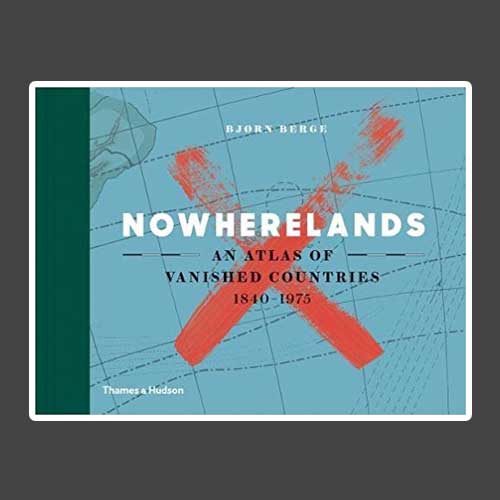BOOK RELEASE: Stamps of Vanished Countries or Nowherelands
2017-11-15 Wed
An interesting book named Nowherelands: An Atlas of Vanished Countries, 1840-1975 by author Bjorn Berge, from Thames & Hudson, was released recently. The book explains firsthand accounts, historical interpretations, and the surviving stamps of several countries that no longer exist today.The author believes that stamps provide a proof for the existence of these countries. However, he also thinks that these stamps lie by trying to portray their respective countries to be more dependable, more liberal, more merciful, or better governors, than in reality.
The Sultanate of Upper Yafa issued stamps in the year when the state was abolished - 1967, in fact, even without an official postal system in place. Degas’s stamps featuring ballet dancers represent a nonexistent stability. Eastern Karelia, which lived for only for a few weeks, issued a stamp of a roaring bear under the Northern Lights. The country succumbed to the Soviet-Finnish War in 1922. The design was a strong statement made by the East Karelian separatists against the Soviets.
A 1940 stamp from Manchukuo features a crane flying over a ship’s mast. The dishonest design shows a peaceful scene in the short-lived Japanese puppet state that existed from 1932 to 1945. The country is known for its dangerous experiments at Unit 731, where thousands of lives were lost. People were used as test subjects for research on biological and chemical warfare.
An 1856 stamp from Van Diemen’s Land features a youthful Queen Victoria. The image tries to hide the hardships and atrocities that people from this colony faced. In a way, the penal colony was connected to its distant colonial power. The country is today known as Tasmania.
The Channel Islands was occupied by Germany from 1940 to 1945. It has stamps that suggest printing subterfuge. Stamps from Guernsey have a tiny “V”, like the ones tagged on walls and lampposts by night. Three lions are copied from the British coat of arms. A stamp from Jersey includes an inverted “V” below its image of seaweed gatherers. Cape Juby released a stamp in 1919, using unsold 1872 Spanish stamps, depicting a royal red crown. These stamps try to highlight the glory of an issuing nation even by overprinting another country’s stamps with their name.
Stamps also sometimes wrongly suggest that a country is good enough to administer its own postal infrastructure. The author believes that these stamps were a part of a dangerous propaganda to deflect the world from harsh realities that the issuing country is facing.
The author has also mentioned his list of recommended reading, music, films, and recipes in his book. Berge aims to collect a stamp from every country and every regime that has ever been active after the first Penny Black was issued in England in 1840.
Latest News
-
Agra Mint of Muhammad Akbar
2024-04-30 TueAla al-Din Masud Shah was the ruler of the Delhi Sultanate from 1242 CE to 1246 CE (AH 639-644). Dur...
-
Raja Ravi Varma
2024-04-29 MonOn 29th April 1848 Raja Ravi Varma, a famous classical painter, and great Indian Artist, was born in...
-
Panchala King Bhanumitra Copper Coin
2024-04-26 FriThe Panchala kingdom was ruled by the Mitra kings. The Mitra kings are known to issue coins and most...
-
Mahatma
2024-04-25 ThuIndia Post issued a commemorative postage stamp on #LalaHansraj, also known as Mahatma Hansraj for�...
-
Berar Mint of Muhammad Akbar
2024-04-25 ThuBerar was a kingdom located in the Deccan region, with Elichpur as its capital. It was one of the Su...

